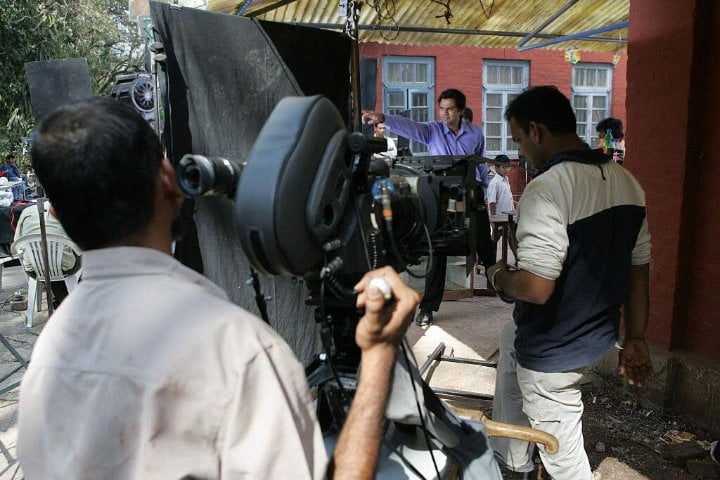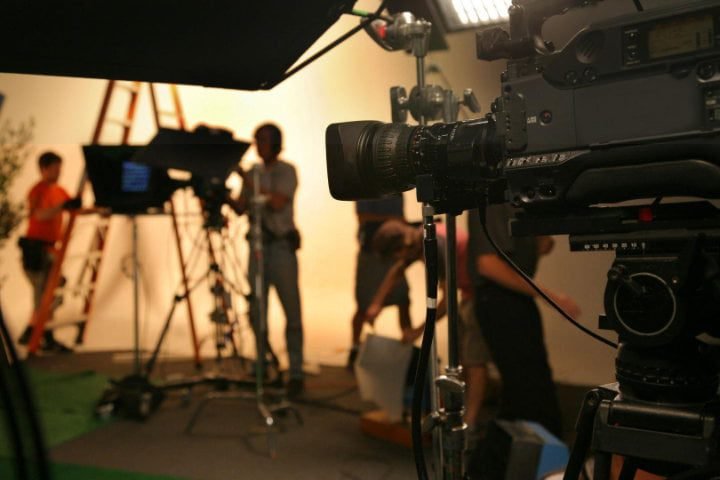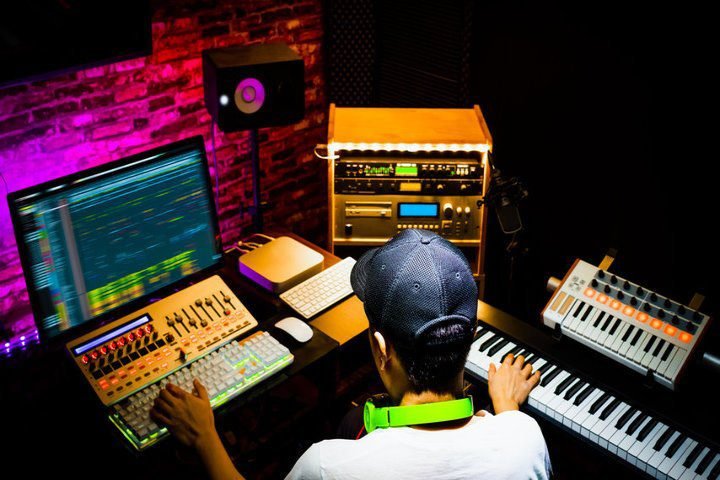- The 7 Stages of Film Production Process
- Pre-Shooting Stage in Film Production Process
- Shooting Stage in Film Production Process
- Post-Shooting Stage in Film Production Process
Development: Beginning of Film Production Process
Every film production process begins with an idea. The idea gets developed as a concept and finally transformed into a screenplay.
In This Article
It is typically the screenplay writer’s responsibility to develop an original idea; however, the director or producer may also convey the same, which will eventually result in a written screenplay.


So, the development stage of a film production process primarily starts with developing an original idea, using a script already written, or acquiring rights to books, plays, and other materials, and continues until the final draft of the screenplay is completed.
During this time, the screenwriter writes the first draft of the synopsis, which is used to convince producers to put their money into the film. Storyboards and other visual aids are also made to describe what the movie is about.
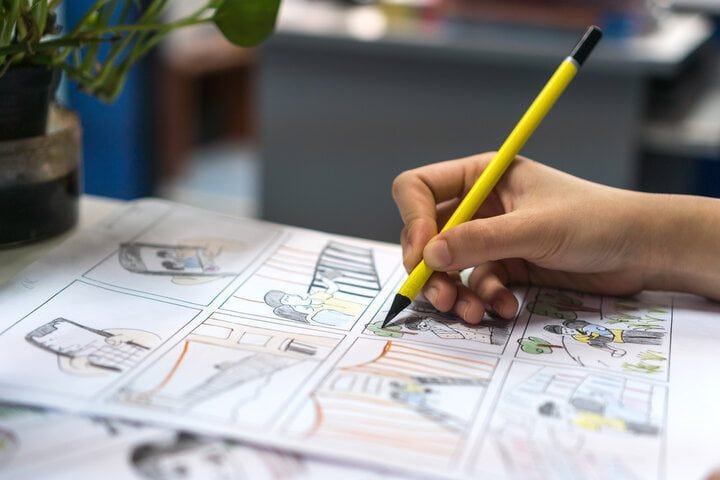

Nowadays, the jobs of screenwriter, producer, and director overlap. For instance, Bollywood’s famous filmmaker Rajkumar Hirani works as a screenwriter, director, editor, producer, and distributor for his films.
Conceptualization
At this stage, writers shape their ideas and transform them into a compelling concept that’s fit for film. Lots of brainstorming is done to craft a compelling narration and character development, which work as a strong foundation for the film’s success.
Filmmaker Rajkumar Hirani and writer Abhijat Joshi worked together over the past 18 years to deliver movies like Lage Raho Munna Bhai, PK, 3 Idiots, Sanju, and Dunki. All of these movies are critical as well as commercially successful. Speaking about their process of screenplay writing, Hirani said in an interview that he always looks for a unique idea. Whether it’s PK, where an alien is in search of a godman, or Mahatma Gandhi meeting a gangster, the attempt is always to find unique stories—something that has not been told before.
Here’s a snippet of Rajkumar Hirani & Abhijat Joshi on their writing process & how thoughts become a movie.

Planning
The film production process requires meticulous planning. Outlining the film structure, creating a script, pre-visualizing the film through storyboards and concept art, and developing a production plan are done during the development phase.
Planning also involves pinpointing shooting locations for each scene, securing permits, assembling a trustworthy and talented crew, and setting up a solid budget for devising a spending plan and prioritizing needs.
The location manager handles the creative side of finding appropriate locations, and the logistics needed to make that location work, like booking the location and property, securing permits, and safety arrangements for the film shoot.
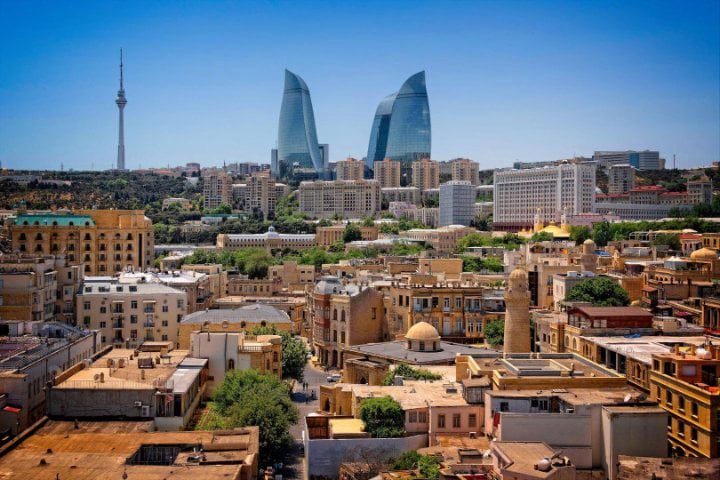

Earlier, the preferred location for most of the Bollywood films was in European countries, especially Switzerland. However, in the past decade, Azerbaijan, a former Soviet Republic, situated at the intersection of East Europe and West Asia, has become a favorite destination for Bollywood filmmakers on a budget. With its nine climatic zones, from alpine to subtropical, Azerbaijan offers filmmakers a low-budget European experience and helps them recreate a Parisian landscape in Baku.
Filmmakers weigh their options for what works best for the story’s needs and their budget. If the film is shot on location, various logistics will need to be completed, such as obtaining shooting permits, paying for location usage, and insurance coverage.
The careful consideration helps in a more streamlined production process and a smoother filmmaking experience.
Securing financing
Filmmaking is a creative endeavour, but it’s still a business. A filmmaker’s goal is not only to create meaningful stories that connect with audiences but also to earn enough money to return on their investments and make a profit. Regardless of the production scale, there are always expenses, including people, places, and resources; therefore, fundraising is critical for a project’s early development.
Pre-Production
At this stage, all the planning takes place before the camera rolls. Preproduction also includes locking the shoot location and casting. The producer will now hire a line manager or production manager to create the schedule and budget for the film.
Production Design
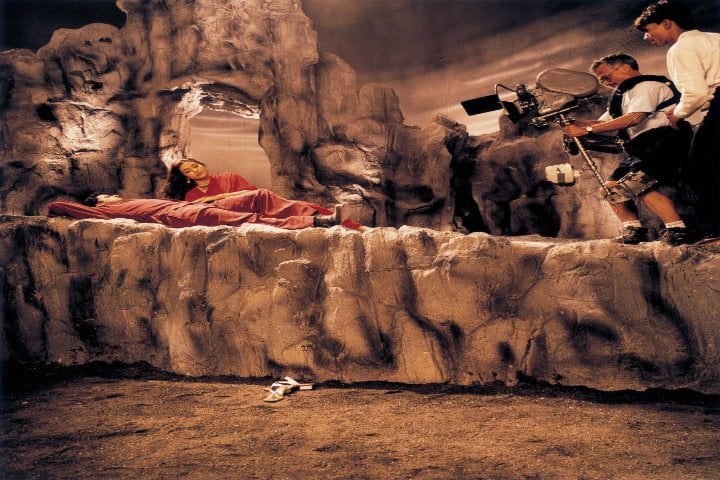

The production design department oversees the planning, acquisition, and creation of elements seen within a film. They are typically responsible for the props, wardrobe, hair, makeup, set design and construction, set dressing, carpentry, and greenery, to name a few design aspects.
Scheduling
A detailed schedule is mapped out for the duration and dates of filming. The schedule clearly outlines:
- The number of days production will take place
- What or who is needed on each production day?
- What shots will be covered each day, and in what order?
These are challenging questions to answer, and lots of communication occurs among all the departments to create the schedule.
Actor Preparations and Rehearsals
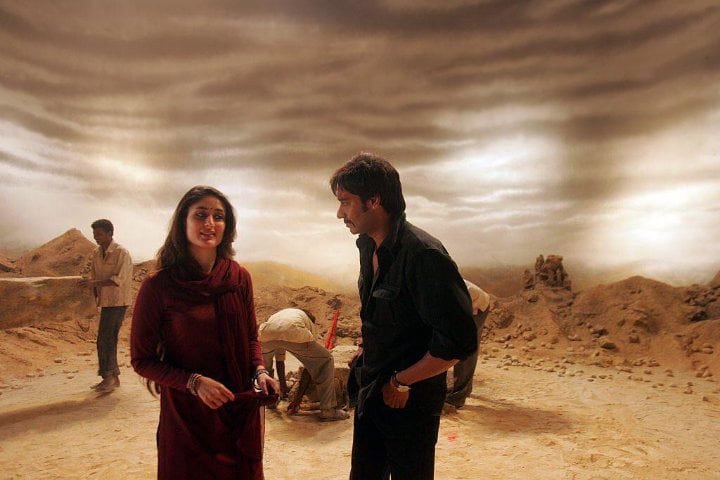

Before appearing on screen, actors must work with the director and other supporting cast during a rehearsal period. This period often involves mental and physical preparations for their role, character, and story research. Actors also analyze the rhythm of the story and stage action in a scene.
Production
During this phase, advance planning of the daily shoot is done. The primary aim is to stick to the budget and schedule; this requires constant communication between all parties involved in managing location, production design, financers, etc.
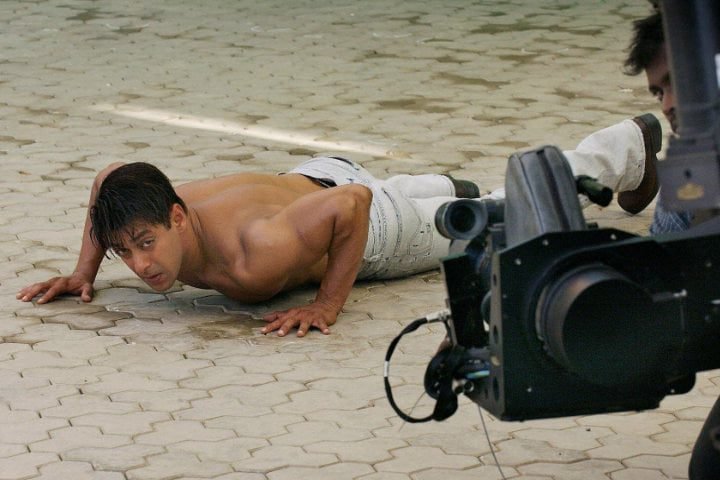

At the production stage, the following tasks are expected:
- Setting up and organizing the technical equipment, such as cameras, lights, and sound equipment.
- Filming scenes according to the script and vision.
- Directing the actors and guiding their performances.
- Capturing various camera angles and shots to convey the desired visual style.
- Ensuring proper lighting and sound recording during filming.
- Dealing with unexpected challenges and making on-the-spot creative decisions.
- Coordinating with the costume designer to select and manage costumes for the characters.
- Reviewing and discussing the filmed footage with the director and editor.
- Conducting any necessary reshoots or pickup shots if required.
- Documenting and organizing all footage and production-related materials.
- Preparing for the post-production stage by handing over the footage to the editing team.
Principal Photography
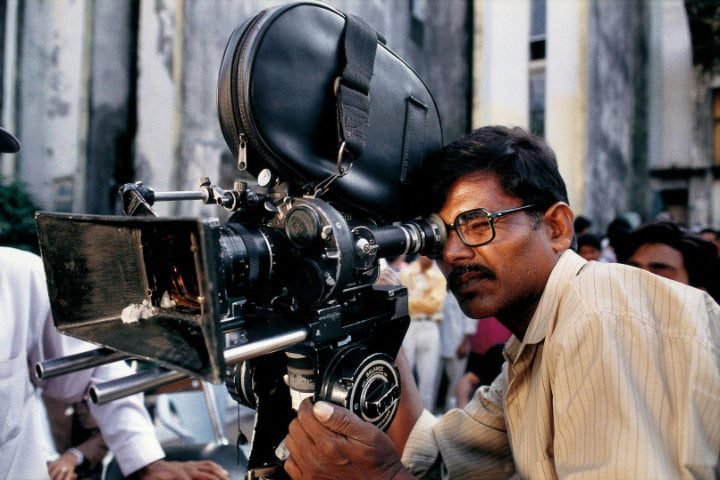

Principal photography implies shooting the actual film. Everything that has happened up to this point is to make principal photography go as smoothly and efficiently as possible.
This is always the most crucial and expensive phase of film production. For this phase of production, actors, directors, camera personnel, and crew have committed their time. Then there are the costs of certain shots, props, and special effects are involved.
A full set of records is maintained during the shoot to remain on time and budget.
Wrap
This is the period immediately after shooting ends. At this point of time, the production crew clears the set and the location. Everything is then returned in good order to suppliers and records are maintained.
Post-Production
Upon completion of principal photography, post-production begins. At this stage, picture and sound come together. It’s said the final rewrite of the film happens in the edit. This is where the magic and power of post-production can help evolve the original screenplay into something more substantial.
The post-production phase includes:
Picture Editing
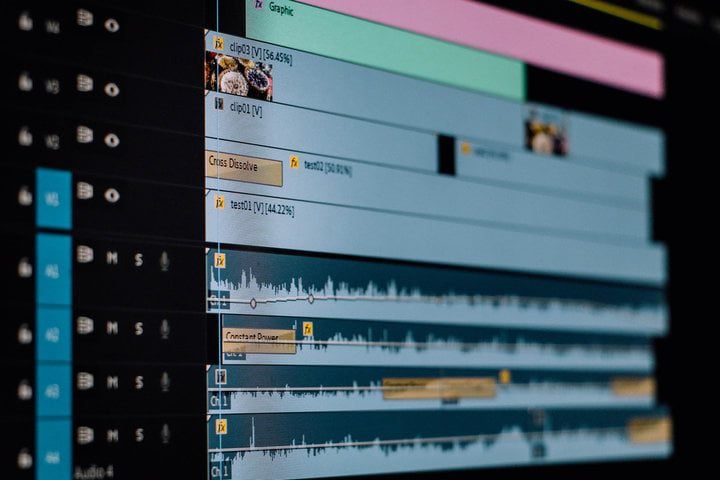

- Rough cut: organizing and arranging raw footage into a coherent structure.
- Fine Cut: refining the rough cut, focusing on pacing, timing, and overall flow.
- Final Cut: completing the final version of the edited film.
Color grading
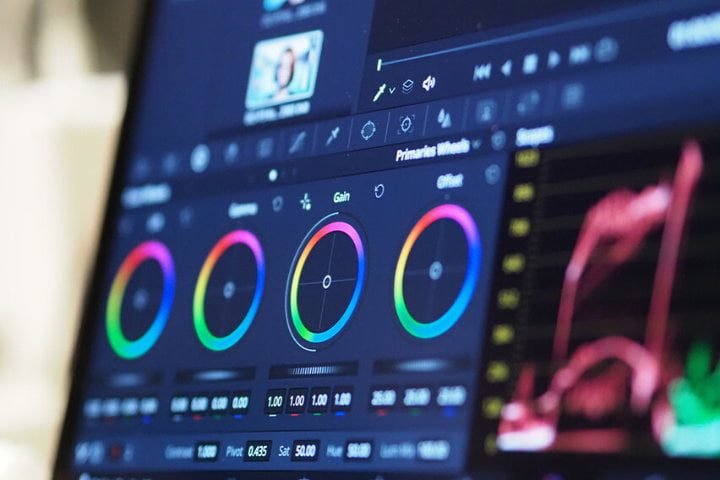

This involves adjusting the color and tone of each shot to establish a consistent visual style.
Sound design and editing
This includes things like sound effects, dialogue editing, and a soundtrack.
Visual Effects (VFX)
This stage includes things like computer-generated imagery (CGI), digital effects, or 3D modelling.
Titles and graphics
This is where opening titles and closing credits are designed.
Sound mixing
Sound mixing artists balance and adjust the levels of different audio elements, including dialogue, music, and sound effects, to get the final mix and master.
Distribution
Once the film is completed, it must be distributed. This is how producers make their money back. For this, it is important to secure the right distribution deals for the projects. The film will go into theatrical release, film festivals or distributed via various Video-on-Demand (VOD) platforms such as Amazon Prime, Netflix, Hotstar, etc.
Marketing
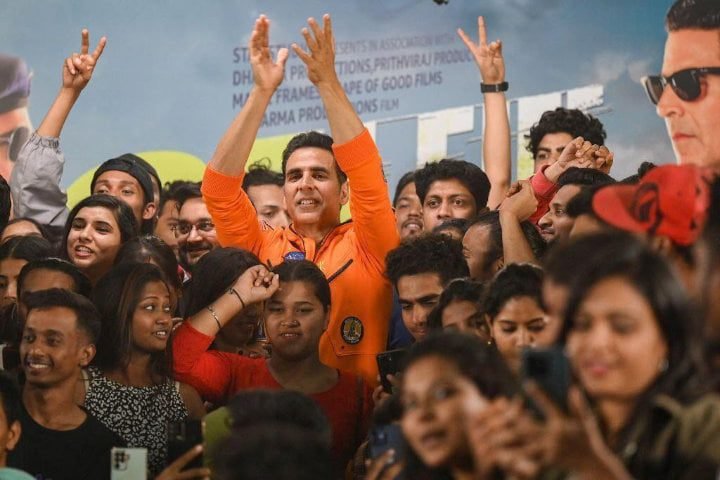

Marketing plays a critical role in gaining viewership and sales. Marketing methods can include:
- Trailer and promotional materials
Creating an engaging trailer and promotional materials (such as posters or stills) to capture the essence of the film and compel viewers to watch it. - Online presence
Building a strong online presence through a dedicated film website or social media channels.
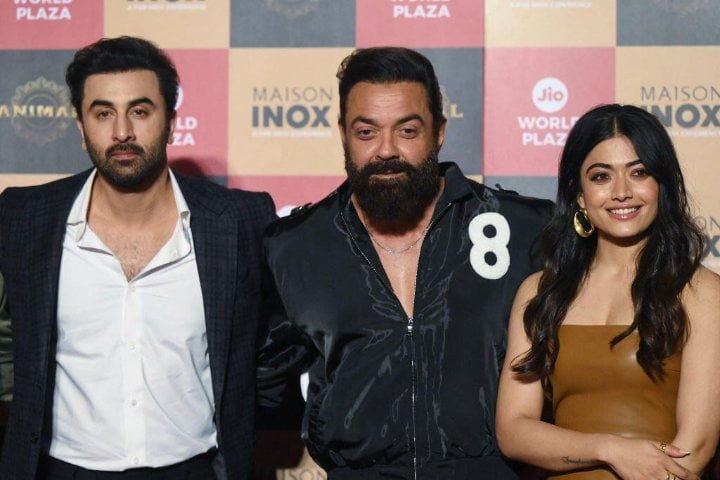

- Publicity and PR
Engaging with media outlets, journalists, and influencers to generate press coverage, interviews, and reviews of the film. - Screenings and Events
Organizing special screenings, Q&A sessions, and other events to engage with the audience and build a loyal fanbase.
The Film section in the CUET UG 2024 Mass Media and Communication syllabus includes this topic.

